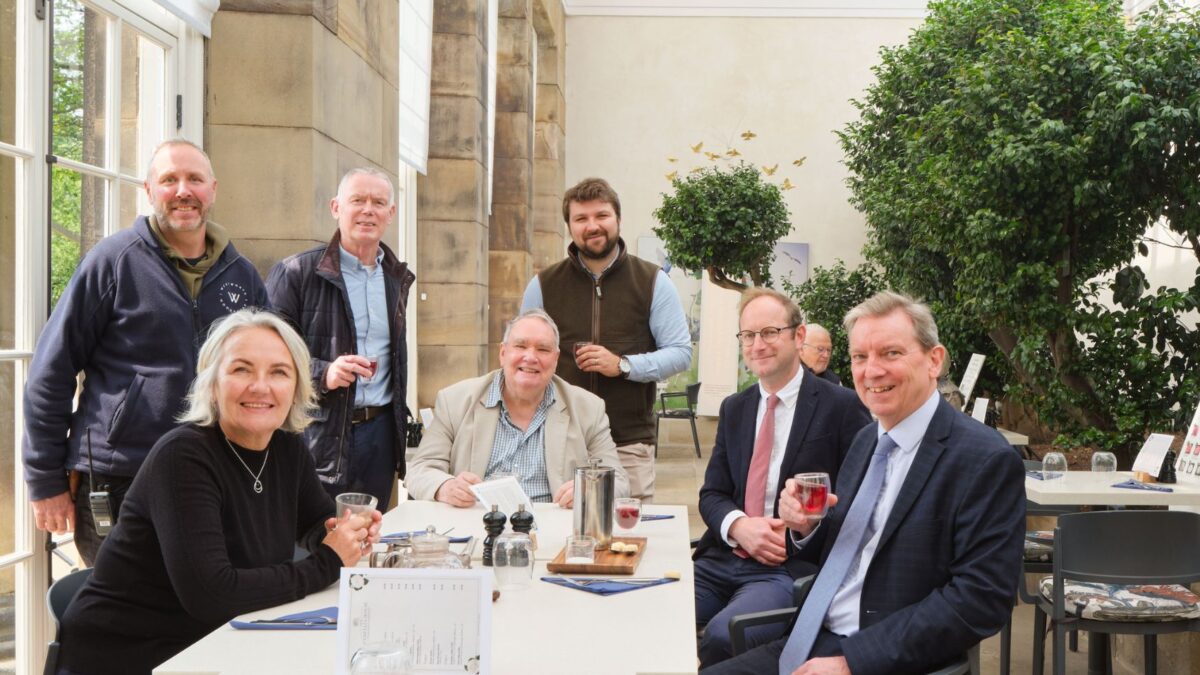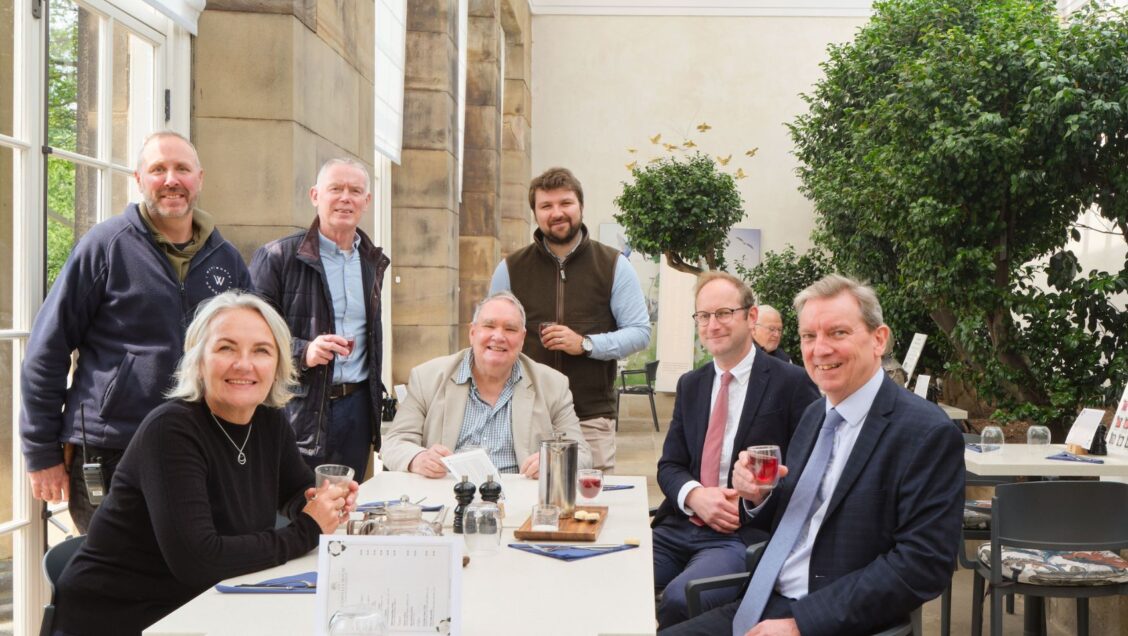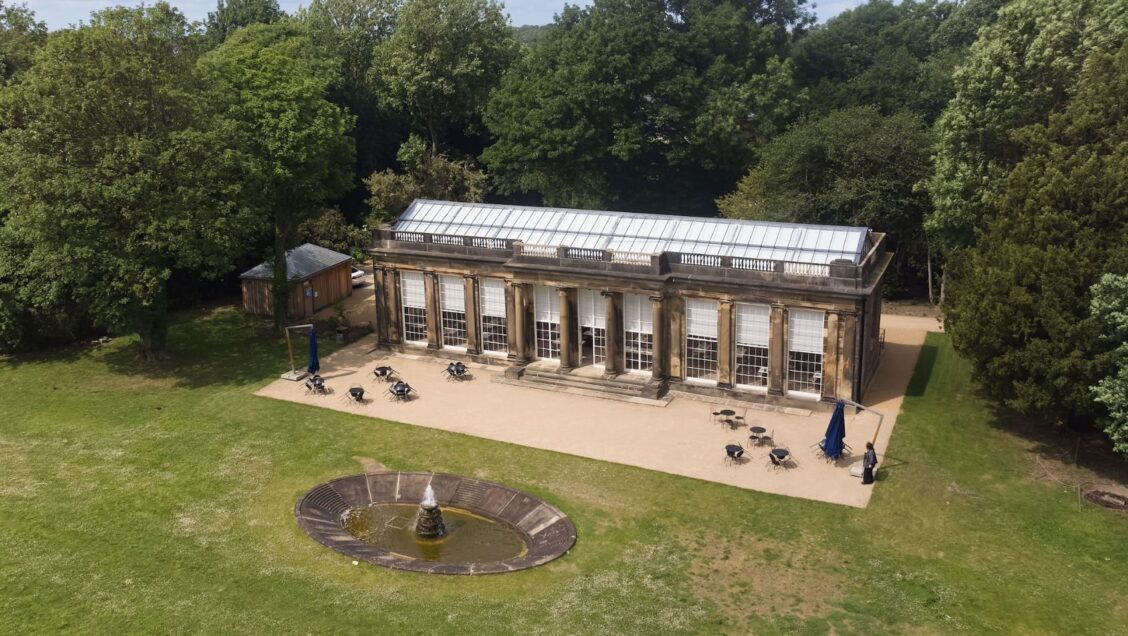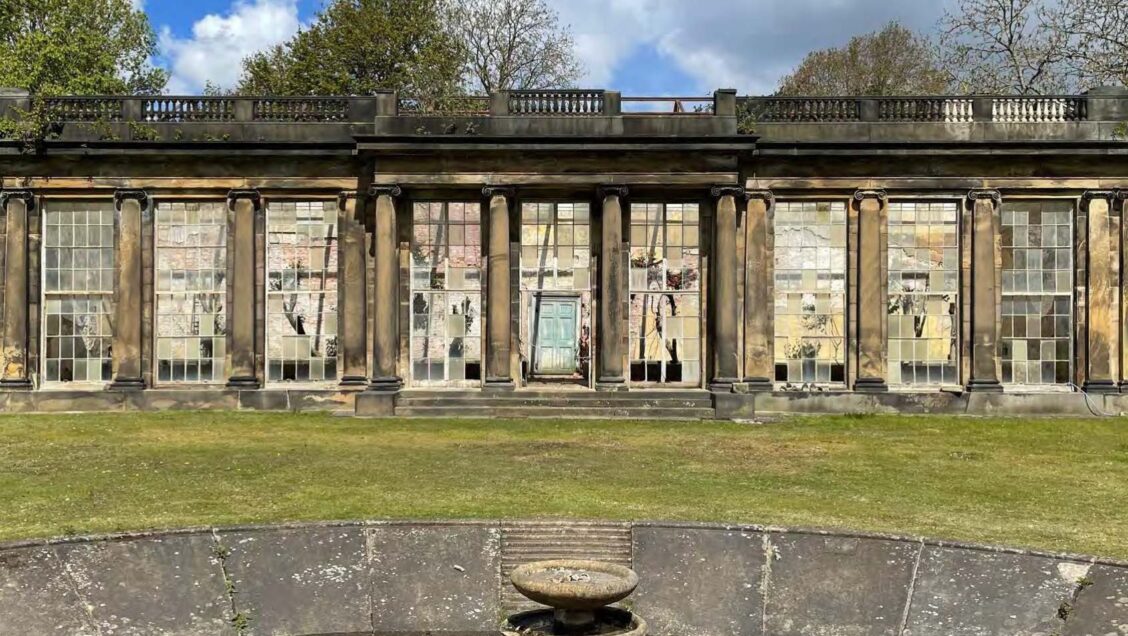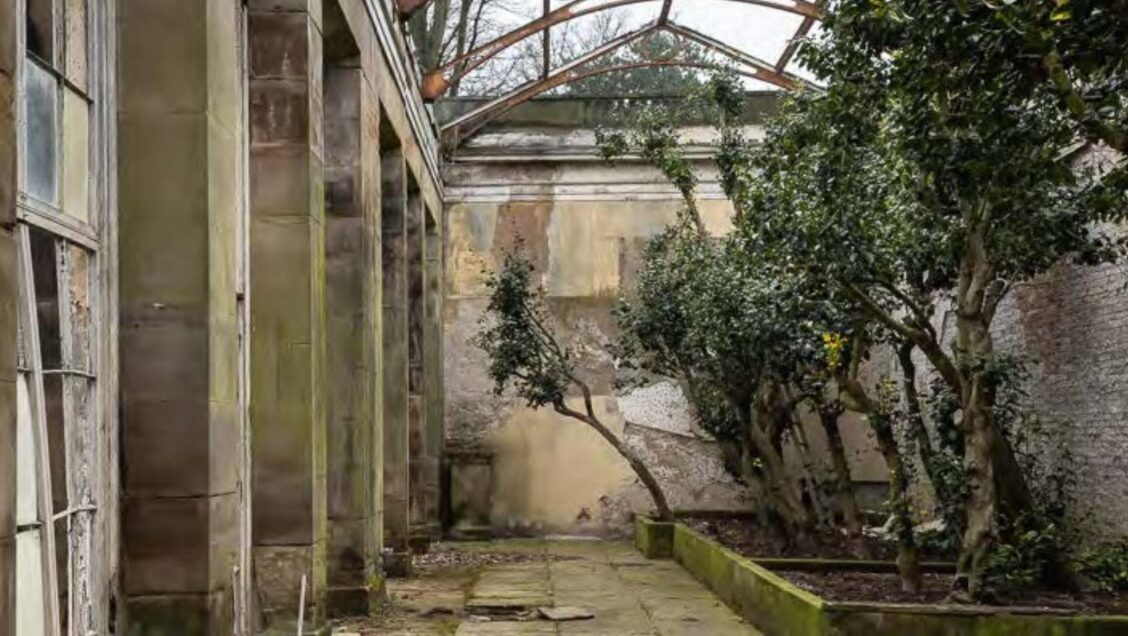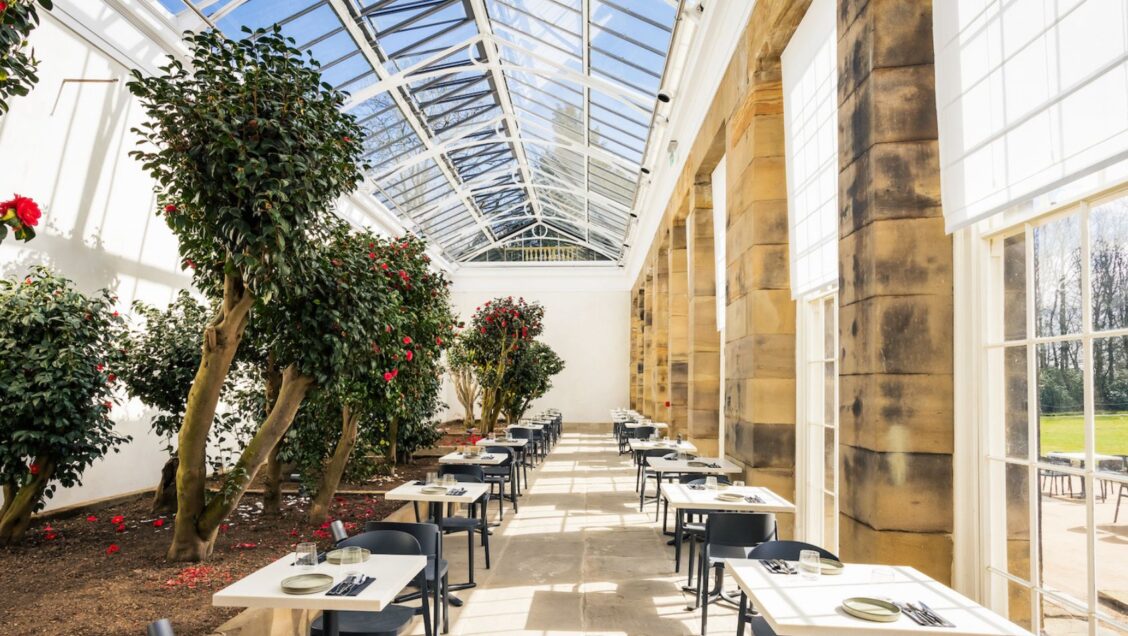Europe’s most prestigious cultural heritage awards has given a major accolade to the Grade II* listed Camellia House, which is home to some of the oldest surviving camellias in the Western world. The European Heritage Awards/Europe Nostra Awards has declared the project as one of its 30 outstanding winners from 24 countries across the continent.
The Camellia House was the only project in the UK and one of only three winners outside of the EU Creative Europe Programme, which co-funds the awards.
The building had been derelict for 50 years before a sympathetic refurbishment by heritage architects, Donald Insall Associates, transformed it form a roofless ruin on the Heritage At Risk register to a public tearoom and heritage venue in 2024. Its nationally important camellia collection, described by horticulturalists as a “library full of first editions”, was carefully tended throughout the construction process.
Europa Nostra is the most representative heritage civil society network in Europe. The awards identify and promote best practice in the conservation and enhancement of cultural heritage, stimulate an exchange of knowledge throughout Europe, and increase public appreciation of Europe’s cultural heritage. The Awards Jury, composed of 11 heritage experts from across Europe, said: “This restoration project removed The Camellia House from the Heritage At Risk register. The revival of the rare camellia collection, and the integration of energy-efficient features, demonstrate a balanced approach to horticultural, architectural, and environmental heritage. By restoring cultural and social functions in an area affected by economic hardship, it contributes to regional regeneration through heritage.”
Grade I listed Wentworth Woodhouse, built for the Marquesses of Rockingham in the 18th Century, sits in South Yorkshire – an area of social and economic deprivation. The entire site was in a state of decay when it was bought by Wentworth Woodhouse Preservation Trust in 2017 for £7million. The Camellia House in its Gardens is a historically significant building. Its north side dates from 1738, and was built as a tearoom for Lady Rockingham, wife of the 1st Marquess. It features an early 19th Century orangery to the south, added to house the family’s growing collection of camellias which has recently begun to arrive from China. The rarity and age of the camellias that remain was only recently discovered.
The £5million restoration was funded by The National Lottery Heritage Fund, Historic England, and other contributors.
The Preservation Trust’s brief for conservation architects, Donald Insall Associates, was to sympathetically repair the derelict Georgian building and incorporate sustainability and energy efficiency, all while protecting the historic camellias and ensuring they continue to thrive in their newly-renovated setting. Traditional craftsmanship and heritage conservation methods were integrated with low-carbon upgrades – breathable insulation, a rainwater harvesting system, and underfloor heating powered by a ground-source heat pump. The project has been described as setting “a new benchmark for the standards of sustainable design which can be incorporated into heritage and listed buildings”.
Applications to this year’s European Heritage Awards/Europa Nostra Awards came from 41 European countries. The winners will be celebrated at the European Heritage Awards Ceremony 2025 on 13th October during the European Cultural Heritage Summit 2025, which will take place from 12th to 14th October in Brussels.
The Trust’s CEO, Sarah McLeod OBE, said: “We are bursting with pride to be heading to Brussels to receive this highly-respected European heritage award. An exceptional conservation team collaborated to take our Camellia House from a roofless wreck in danger of collapsing, back to its original grace and beauty – and vastly improved its sustainability and green credentials. The building, and the historically-important camellias which inhabit it, now have a long and lasting future. The Camellia House is now a thriving café and boosting income for the Trust.”
Dorian Proudfoot, Chief Executive of Donald Insall Associates, said: “Conservation is only successful if it enables a building or place’s continued use and vitality. The story of The Camellia House, an important part of a wider transformation at Wentworth Woodhouse, is an example of long-term custodianship that not only revived what was an abandoned ruin, but was also a catalyst for lasting social impact. It is incredibly rewarding to see our client’s vision to create an inclusive, world-class destination being recognised in Europe’s most prestigious heritage award.”
Background Information
Camellias – flowering plants native to East Asia – were a prized novelty in 18th and 19th-century Europe. At Wentworth Woodhouse, the largest stately home in Britain, The Camellia House was built in 1738 as a tea pavilion, and extended in 1812 to house a rare collection of camellia, now among the oldest surviving in the Western world.
After the estate fell into decline in the 1980s, the Grade II* listed building stood empty and decaying for over five decades. By the early 2000s, its roof had collapsed, and the plants – some dating to the 1800s – were left exposed to the elements. In 2019, the International Camellia Society confirmed their historic significance, prompting urgent action.
The restoration project of The Camellia House is part of a wider regeneration of the Wentworth Woodhouse site, led by the Wentworth Woodhouse Preservation Trust. With £4million in funding from The National Lottery Heritage Fund, £614,000 from Historic England, and funds from other charitable partners, the Trust restored The Camellia House as a publicly accessible tearoom and events space. More than 10,000 people have visited it since its opening in 2024, including many from marginalised groups. Community Mondays, a Changing Places facility, and step-free access throughout ensure broad inclusion. During restoration, a training programme involving 19 apprentices provided a hands-on experience in heritage construction, while a wider outreach effort included schools, universities, and site tours for professional groups.
By preserving its botanical and architectural legacy, the project has removed The Camellia House from Historic England’s Heritage At Risk register and laid the groundwork for the long-term revitalisation of the wider estate. It offers a transferrable model for restoring historic greenhouses and garden buildings – balancing heritage, sustainability, and social impact in a meaningful and replicable way.
Giles Proctor, Historic England Architect/Surveyor, said: “The transformation of The Camellia House from a roofless ruin to an award-winning heritage venue represents excellence in conservation. As a key funder with our £614,000 contribution, Historic England was delighted to see this Grade II* listed building removed from our Heritage At Risk register. This exemplary project showcases how historic buildings can be sensitively restored with sustainability in mind, while preserving irreplaceable heritage assets like the rare camellia collection. This prestigious European recognition is thoroughly deserved.”
The Camellia House restoration has already won numerous awards:
- Civic Trust Awards 2025, AABC Conservation Award – Highly Commended
- Georgian Group Award 2024, Re-Use of a Georgian Building – Winner
- RICS Regional Awards (Yorkshire & Humberside) 2024, Refurbishment/Revitilisation Project – Winner
- Green Apple Awards for Environmental Best Practice 2023, Innovation Category – Winner
